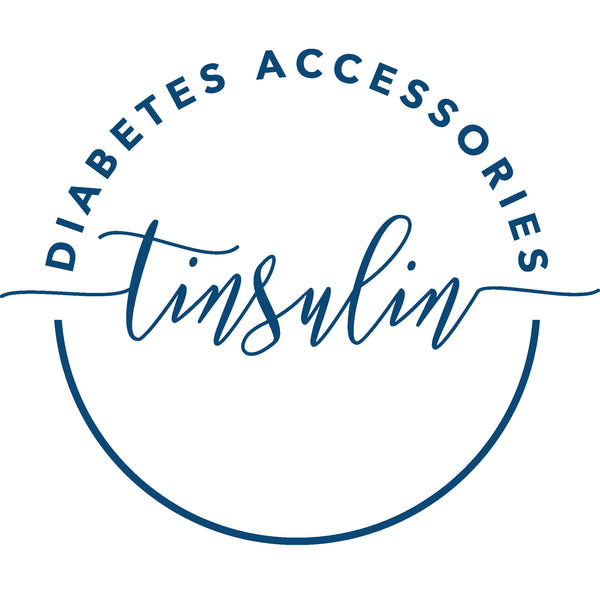
Insulin pump or insulin pens: how to choose?
I often get asked why I use an insulin pump (I have the Minimed 780G in combination with the Simplera sensor) and I want to give a kind of collective answer to this with this blog post.
I can already start by answering that it all depends on your own lifestyle/life stage and your personal preference. What feels good for me may not feel good at all for you.
It all depends on your own lifestyle/stage of life and your personal preference.
Below you will find more information about both options and I will list some pros and cons of insulin pens and insulin pumps that can help you make an informed decision.
An important sidenote here is that this is not medical advice but purely based on my own experiences. If you would like to switch, always do this in consultation with your endocrinologist/diabetes team.
What is an insulin pen?
An insulin pen is a user-friendly way to inject insulin. It is a device that looks like a pen and is equipped with a needle and a reservoir with insulin. You set the correct dose and inject the insulin manually into your skin.

If you use insulin pens you often use 2 types, fast acting insulin which is used for meal boluses and giving any corrections and long acting insulin which constantly releases a little insulin. The amounts of both are discussed with your endocrinologist/diabetes team.
Benefits of an insulin pen
- Easy to use: Insulin pens are easy to use, even for beginners. You place a needle on the pen needle, set the correct number of units and inject it subcutaneously (under the skin).
- Handy: They are compact and easy to take with you on the go.
- No technology needed: With insulin pens you don't need batteries or charging stations.
- Nothing on your body: You do not have a device attached to your body all the time (this of course only applies if you are not using the pens in combination with a sensor).
Disadvantages of an insulin pen
- Manual control: You must manage your insulin dosage and injection times yourself.
- Less precise: It is difficult to deliver very small, accurate doses of insulin.
- Multiple Injections: Multiple injections per day can be taxing and stressful.
What is an insulin pump?
An insulin pump is a small electronic device that continuously delivers rapid-acting insulin through a thin cannula that you place under your skin. The device can be programmed to deliver specific amounts of insulin at set times.

You have patch pumps such as Omnipod and insulin pumps with catheter such as Medtronic Minimed 780G.
Benefits of an insulin pump
- Continuous management: A pump can deliver small amounts of insulin continuously, which keeps blood sugar more stable.
- Hypos are prevented/absorbed : the insulin pump stops delivering insulin when a hypo is approaching, which can often prevent it.
- Flexibility: Ideal for people with an irregular (eating) schedule and people who want more freedom in their lifestyle.
- Precision: The basal insulin dosage is adjusted to your body. Insulin pumps are very suitable for setting small or variable doses of insulin, which often leads to better values and better control.
- Ease of use: Fewer injections are required because the catheter remains in place for several days, depending on the type of insulin pump and catheter this is 3 to 7 days.
Disadvantages of an insulin pump
- Only rapid-acting insulin: Where insulin pens use both long-acting and rapid-acting insulin, an insulin pump only delivers rapid-acting insulin, which also means that your blood sugar level will rise too high more quickly in the event of an issue, such as a cracked cannula (I speak from experience). This increases the risk of diabetic ketoacidosis.
- Technology dependent: As with any technology it may not always work flawlessly, in my case it is often the sensor that needs updating or fails prematurely.
- Visibility: An insulin pump can be less discreet.
- Comfort: Wearing a pump can be experienced as uncomfortable. You constantly have something hanging on you and that is not pleasant for some people.
How do you choose between an insulin pen and an insulin pump?
The choice between an insulin pen and an insulin pump depends on your lifestyle, medical needs, and personal preferences. Here are some questions to ask yourself:
- How often should you administer insulin?
- Do you enjoy using technology?
- How important is discretion to you?
- Do you have a stable or variable schedule?
Always discuss your options with your doctor or diabetes nurse. They can help you make the best choice based on your medical history and personal circumstances.
Conclusion
Both the insulin pen and the insulin pump have unique advantages and disadvantages.
For some, the simplicity of an insulin pen is the best solution, while others appreciate the flexibility and precision of an insulin pump. In my case, I couldn’t live without my insulin pump, despite the fact that I have something constantly attached to my body.
The most important thing is to choose a method that fits your lifestyle and helps you optimally manage your diabetes.
Do you have experience using an insulin pen or an insulin pump? Share your experiences in the comments and help others make their choice!
